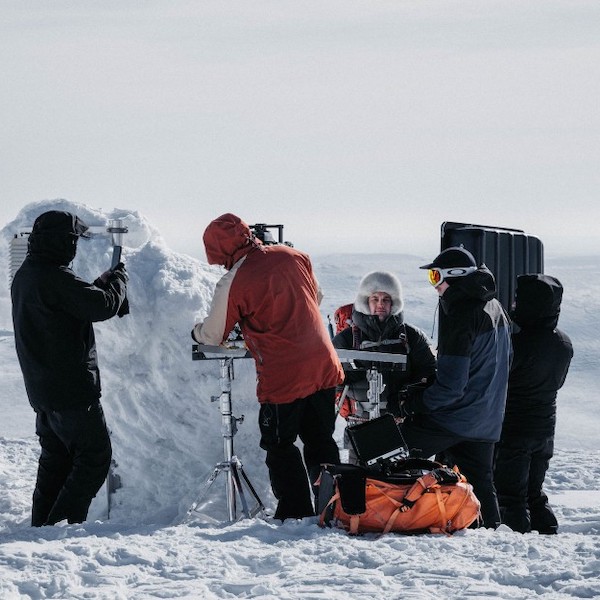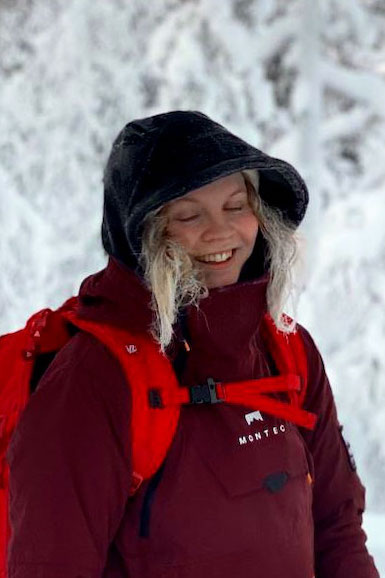🇫🇮 Finnish Lapland increasingly attractive to foreign filmmakers

By Saara-Maria Salonen, Barents Observer
RESIDENTS OF THE small town of Inari, n Finnish Lapland, have had to get accustomed to some changes to their daily lives this winter. With film-production companies flocking to the area, there are many unfamiliar faces around in addition to the regular flow of tourists. Some might get lucky enough to spot international stars, while others might get a chance to appear as film extras or even secure jobs in an industry that traditionally is located in the south.
In recent years, Finnish Lapland has become increasingly attractive to foreign film producers. Currently there are a number of large projects filming in Lapland: the third season of Arctic Circle, of international fame, is being filmed in Inari council while Critical Point, a new series, is filming in Ylitornio. In addition, filming of Constellation, an Apple TV’s series, recently wrapped up filming in Inari, bringing international stars to the small town.
The Barents Observer spoke with Ida Tirkkonen, the head of the Finnish Lapland Film Commission, to find out what makes Finnish Lapland so appealing. The three main selling points, she says, are “accessible nature, distinct seasons and unique light conditions”. In addition, five international airports makes the area easy to access from abroad.
These are just some of the points the Film Commission advertises as it works to promote the area as a filming location, and helps production teams to get the best possible experience filming in Lapland.

Ms Tirkkonen (pictured) reckons that the film industry will only continue to grow in the future. Constellation is, she believes, a good example of how large, international productions can be organised in the area with ease.
“The Arctic region with functional services and infrastructure is a combination that works well,” she says.
And if the predictions of the film industry’s future are true, it will have a large impact on the area.
“The productions use local services such as accommodation, restaurants, transportation, programme services and equipment rentals,” Ms Tirkkonen says.
The already busy tourism area is getting considerably busier with film crews arriving, and that has benefitted local businesses.
“Constellation, for example, used €1.7 million in the area,” Ms Tirkkonen says.
In addition, the productions hire locals, allowing many professionals and those starting out in the film industry to work in Lapland.
Ms Tirkkonen points out that these productions are giving more visibility to the Arctic region, while the development of the audio-visual industry in the North will employ the professionals who already live in the area. Traditionally, the film industry hires people from outside the region and expanding film shoots in Lapland will be a welcome change to the film professionals of Lapland.
FURTHER READING
• What we can learn from Oscar-nominated Ivalu
• This fund aims to help indigenous filmmakers tell their own stories about the Arctic
• How a collaboration with Disney shaped the way Sámi cultural details were portrayed in Frozen 2
• Coming soon: a Sámi version of Disney’s ‘Frozen’ sequel
• Netflix series needs stronger acknowledgement of Inuit inspiration, says Yup’ik student
• Northern films to feature at German festival
Located in Kirkenes, Norway, just a few kilometers from the borders to Russia and Finland, the Barents Observer is dedicated to cross-border journalism in Scandinavia, Russia, and the wider Arctic. As a non-profit stock company that is fully owned by its reporters, its editorial decisions are free of regional, national, or private-sector influence. It has been a partner to ABJ and its predecessors since 2016.
This article has been fact-checked by Arctic Business Journal and Polar Research and Policy Initiative, with the support of the EMIF managed by the Calouste Gulbenkian Foundation.
Disclaimer: The sole responsibility for any content supported by the European Media and Information Fund lies with the author(s) and it may not necessarily reflect the positions of the EMIF and the Fund Partners, the Calouste Gulbenkian Foundation and the European University Institute.
